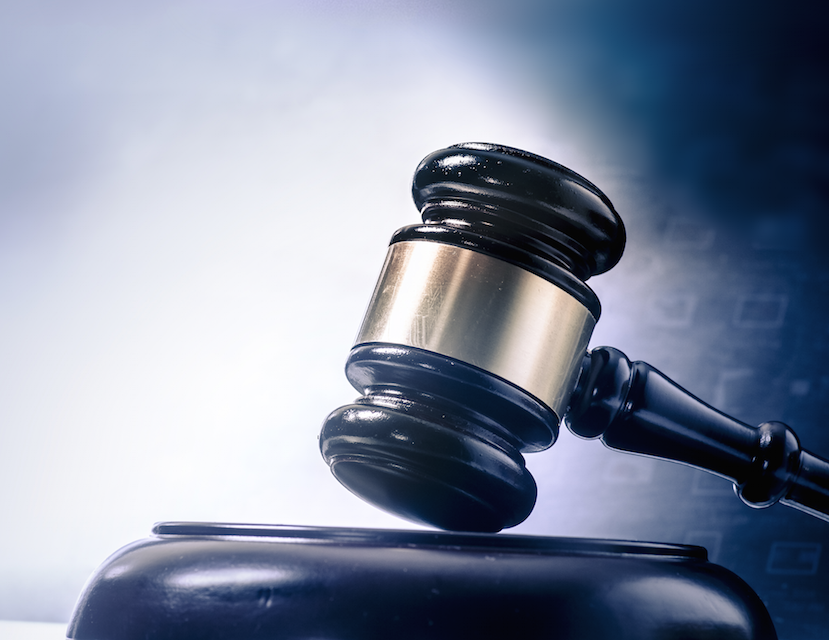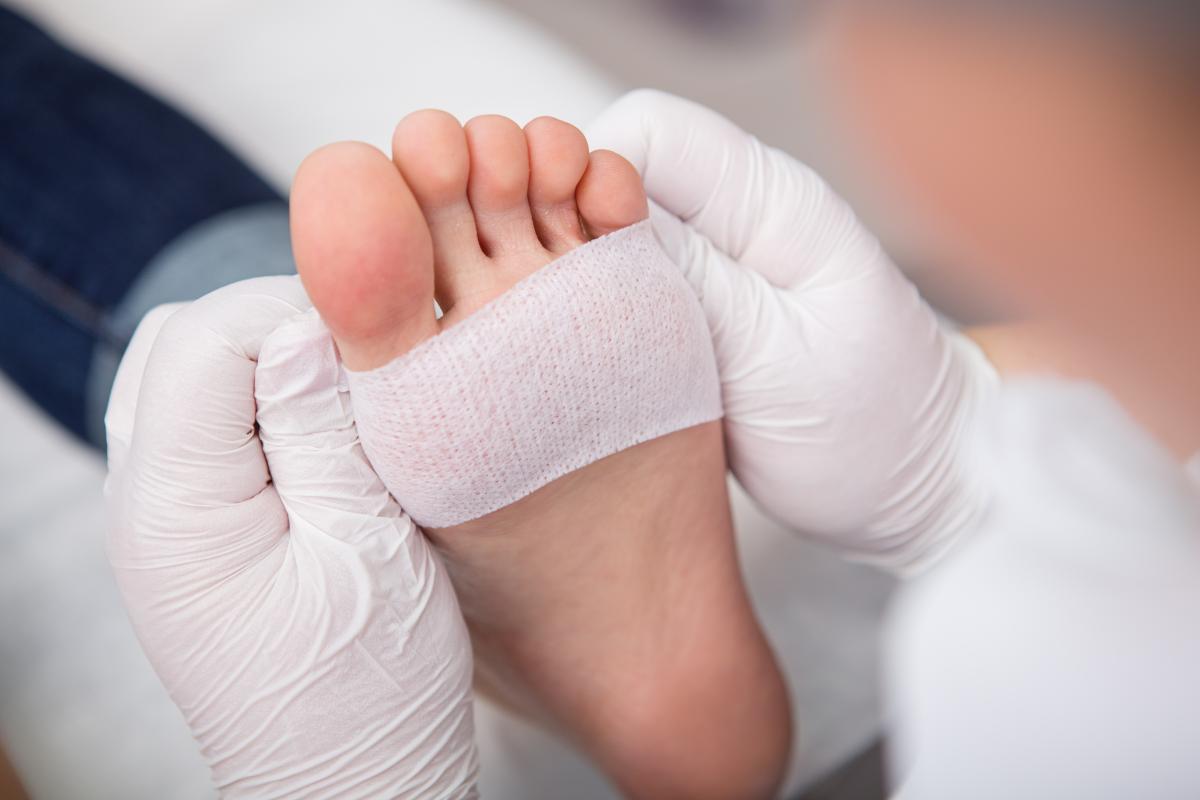Avoiding Malpractice Dangers With EHRs
 Although electronic health records (EHRs) have streamlined podiatric record-keeping, inappropriate use or an overreliance on pre-populated templates can lead to the courtroom. This attorney presents several scenarios of potential malpractice suits and outlines strategies for the judicious use of EHR.
Although electronic health records (EHRs) have streamlined podiatric record-keeping, inappropriate use or an overreliance on pre-populated templates can lead to the courtroom. This attorney presents several scenarios of potential malpractice suits and outlines strategies for the judicious use of EHR.
The American Recovery and Reinvestment Act provides for financial incentives for healthcare providers who prove meaningful use of electronic health records (EHR). Meaningful Use of EHRs, as defined by HealthIT.gov, consists of using digital medical and health records to achieve the following:
• improve quality, safety and efficiency, and reduce health disparities;
• engage patients and family;
• improve care coordination, and population and public health; and
• maintain privacy and security of patient health information
Other benefits of EHRs include a printed record legible to all; electronically created and transmitted prescriptions; one comprehensive location of the patient’s records for all providers; and ease of access of patient information across mobile devices.
One would think that these benefits should lead to fewer health disparities and, by extension, less malpractice litigation. I focus here on several problems that a podiatrist may encounter with malpractice litigation in the age of EHRs.
When The Record Is Not Worth The Paper It Is Printed On
Consider this scenario. You enter the examination room where your assistant has already placed the patient, sans shoes and socks, in the examining chair. The assistant has also opened the EHR for the patient and started a new encounter record for you to complete. Now you are facing your patient and exchanging pleasantries. Next to you is your screen showing the new note containing a lot of pre-populated fields from entries made at prior visits, default responses awaiting change if necessary and perhaps areas on the screen that require typing additional information. In addition to history and medications, the findings from the previous visit are already pre-populated for the present visit. There is an old paper chart for the patient but you did not pull it for the visit.
Someone told you that you should incorporate the information in the old chart into the new EHR but it did not happen. After the usual repartee, you conclude that the patient is doing as well as expected with no complications but with the usual complaints as expected following surgery three weeks earlier. There is not much to document. The note ends with a pre-populated “progressing as expected, return in two weeks or earlier if needed,” which you do not change.
 What was probably a seven-minute encounter with the patient (with no suggestion that you should have spent more time for a visit of this nature) results in two pages filled with a lot of words, most of which the computer placed on the page without any action other than the opening of a new encounter note. There is also some information you may or may not have entered, either by way of a pull down menu or multiple choices, and maybe some free writing via your keyboard. You say goodbye to the patient and she leaves. One of your staff cleans the room and closes your entry. The record for that visit is now complete and will live on forever somewhere inside your computer, or more likely in a cloud-based system.
What was probably a seven-minute encounter with the patient (with no suggestion that you should have spent more time for a visit of this nature) results in two pages filled with a lot of words, most of which the computer placed on the page without any action other than the opening of a new encounter note. There is also some information you may or may not have entered, either by way of a pull down menu or multiple choices, and maybe some free writing via your keyboard. You say goodbye to the patient and she leaves. One of your staff cleans the room and closes your entry. The record for that visit is now complete and will live on forever somewhere inside your computer, or more likely in a cloud-based system.
A year later, the attorney representing your former patient is reviewing the record you furnished after receiving the appropriate HIPAA release. Although you think you were well served with your EHR, the attorney has a plan to show the record is not worth the paper it is printed on and will use it to strengthen the patient’s claim of malpractice against you.
Incorporating Old Paper Charts Into EHRs: What You Should Know
No matter the nature of the alleged malpractice, this particular EHR scenario will likely make the podiatrist more vulnerable and less credible to a jury. The patient’s attorney will first make sure he or she obtained both charts from the podiatrist. It is often the case that only the electronic notes go to the requesting attorney and these may lack consent forms, labs, biographical and history forms, patient questionnaires or the older paper chart. Assuming that claim involves information in the paper chart not carried through into the EHR, the attorney will go further in his or her analysis of both charts.
The first area vulnerable to criticism will be that nobody ever scanned the paper record into the computer system and saved it as a simple PDF document. It is even more problematic for the podiatrist if that paper record was in storage and not even on the premises of the podiatry office. It should be easy for any software to have a hot button to open a specific document or at least open a dialogue box so one can retrieve the old chart in PDF format from memory, open it and peruse it.
The attorney will proceed to compare the history and medications in the EHR to those in the paper record to see if they are consistent. The attorney will then compare exam findings for consistency. Did the podiatrist document the patient’s flatfoot deformity in the paper chart but forget to get that information into the EHR? The same is true of reflexes, vascular status, range of motion and other examination findings. More often than not, the defendant in a malpractice suit will say the old record was not needed but was available if needed. The defendant will also indicate there was no set practice in place to incorporate the record — in whole or in part — into the EHR.
 If there is a prior written record, it is highly likely that the patient has some, if not a long, history and for the most part, the podiatrist’s memory of the patient and his or her history is more than adequate. Simply asking the patient at the beginning of the record creation if he or she has any pertinent history is usually adequate. Pulling older paper charts just to have them available, even for routine visits, is actually counterproductive and can lead to lost or misfiled records, defeating the purpose of an EHR. Going through an old record merely to compare scientific findings, which likely have no relevance, is unreasonable to expect.
If there is a prior written record, it is highly likely that the patient has some, if not a long, history and for the most part, the podiatrist’s memory of the patient and his or her history is more than adequate. Simply asking the patient at the beginning of the record creation if he or she has any pertinent history is usually adequate. Pulling older paper charts just to have them available, even for routine visits, is actually counterproductive and can lead to lost or misfiled records, defeating the purpose of an EHR. Going through an old record merely to compare scientific findings, which likely have no relevance, is unreasonable to expect.
While one should have a system for deciding what to forward from the old chart into the EHR, the fact remains that not doing so is irrelevant unless the claim is one for not being aware of something from the patient’s past podiatric history. Absent that, the patient’s attorney would just be leveling criticism for the sake of criticizing.
Recommendation: Apply a consistent formula or standard for the incorporation of older, paper records into the EHR. If it is logical, reasonable and one follows the plan consistently, a jury is more likely to accept it.
A Word Of Caution On Pre-Populated Or Cloned Responses
Another issue that exposes the podiatrist to effective criticism in front of a jury is the pre-populated information and default responses (i.e. normal findings) created each time one opens a new entry. Showing a jury that the majority of the information in the majority of visits is identical would tend to show that one created the record without regard to this patient. It is often effective to point out inconsistencies, errors or wrong information that now carries over visit to visit.
Pre-populated historical information is something not worth criticizing because a jury can easily understand the importance to have that kind of unchanging information to repeat from visit to visit. However, pre-populated complaints, symptoms, examination findings, assessments and diagnoses, and instructions are usually fraught with inconsistencies and errors.
One example is that of a patient with diabetic neuropathy yet some pre-populated portion of the chart says that in the examination the patient’s feet were neurologically normal. Another example is that of a patient with longstanding hallux limitus but the range of motion findings default to normal, and the examiner leaves it that way. These kinds of inconsistencies and errors make the EHR less reliable. Accordingly, the lawyer will argue that the podiatrist is careless in his or her recordkeeping, and is therefore unreliable and less credible as a witness.
A poorly executed EHR that contains mostly default information with little applying to the patient for that visit is a serious problem. However, the first step is to determine what default information is not applicable to the patient at that time and what default information does apply.
One could argue that pre-populated historical information is very valuable and having it repeat on each visit permits one not to waste time going through prior notes. Identical examination findings are nothing unusual in podiatry. For example, muscle strength and range of motion will likely remain consistent from visit to visit. If they are not, it usually means that problem brings the patient into the office for that examination and then, based on the examination, present findings may be different from previous findings. However, just because EHRs for multiple visits appear identical, it is unfair to suggest that the podiatrist did nothing other than open a new record with the computer doing the rest.
Even if the EHR is not 100 percent accurate, a jury should be more accepting of it if they understand how the podiatrist created it. In other words, make the EHR more human. The podiatrist would be well advised to describe to the jury how he or she goes through the creation of the EHR, even printing each screen to show the menus and fields that are complete, and how he or she goes about doing so.
Recommendation: Avoid the excessive use of programs automatically designed to pre-populate information from visit to visit. No matter what the software is designed to do, know its limitations and develop a way to get an accurate record that is consistent from patient to patient.
When The EHR Is Part Of A Larger Medical Practice
Consider this scenario. Your practice is no longer a private, standalone practice with your own computer system sitting in the closet next to the X-ray machine. Instead, you have joined a comprehensive medical practice and that practice is linked to a hospital. As part of the contract, every provider in the system, including you, has to use its EHR. The practice promised you it will modify the software to make it more podiatry friendly so you have the necessary menus and multiple choices available with the terminology you use.
One of the touted benefits of EHRs is the ability for all providers for a patient to have access to everyone else’s records. One can now track medications among providers to avoid conflicts and interactions that may harm the patient. Alerts are even built into the system so you cannot issue a prescription for medicine to which the patient may be allergic.
Should you have concerns being a part of this kind of healthcare system as it pertains to the EHR?
 In most podiatry malpractice cases, one need not be too concerned with the patient’s medical conditions unless they impact the pathology in question and its management, or the patient’s injuries. For example, in a case involving a bunion correction gone bad that led to a hallux varus, the case is not likely to be impacted by the patient’s thyroid condition, hypertension or the medication she takes for endometriosis. However, there are cases in which the patient’s non-podiatric conditions are directly related to the podiatric treatment. There are cases in which the patient sues a podiatrist and physician together for cases involving conditions, such as diabetes and infections, which are common to both.
In most podiatry malpractice cases, one need not be too concerned with the patient’s medical conditions unless they impact the pathology in question and its management, or the patient’s injuries. For example, in a case involving a bunion correction gone bad that led to a hallux varus, the case is not likely to be impacted by the patient’s thyroid condition, hypertension or the medication she takes for endometriosis. However, there are cases in which the patient’s non-podiatric conditions are directly related to the podiatric treatment. There are cases in which the patient sues a podiatrist and physician together for cases involving conditions, such as diabetes and infections, which are common to both.
Prior to EHRs, the podiatrist would obtain a history and a list of medications exclusively from the patient. While medical clearances are sometimes necessary for surgery, many clearances only involve routine blood tests and an EKG, requiring little contact with the patient’s physicians or his or her medical records.
However, in the scenario described above, the EHR for every one of the patient’s physicians is now available to the podiatrist with one click of the mouse. The patient’s attorney will argue that given the comprehensive nature of podiatry education and training, there is no reason why the podiatrist should not review the medical records of other healthcare providers.
The defendant in a case may face cross-examination on the medical courses taken during the four-year program he or she completed at the podiatry school. The school may even have a brochure that states its “curriculum is similar to those at other medical schools.” This curriculum may include courses on molecular biology, chemistry, immunology, pharmacology, biochemistry, histology and gross anatomy, including full cadaver dissection, infectious diseases, pathology, pathophysiology, pharmacology, biochemistry, cell biology, genetics, physiology and biology.
After the defendant podiatrist admits taking the required podiatry courses and that he or she rotated in her three-year residency through six hospitals, a jury will be primed to believe that the podiatrist has the training and education to absorb the content of his or her patient’s medical records. In fact, an attorney will argue that while the standard of care for podiatry does not include making diagnoses outside of podiatry, it is part of the podiatrist’s education and training to be knowledgeable as to the meaning of diagnoses outside of podiatry that impact on foot pathologies and their management.
After establishing this foundation, the attorney will then argue that the podiatrist failed to be aware of the contents of the EHRs from the patient’s other healthcare providers. For a patient with diabetes, one can prove that it was a deviation from accepted standards of care not to be aware of the patient’s A1c level when it was easily available in the patient’s EHR. The patient’s attorney will argue that the podiatrist took this easy step and therefore deprived him- or herself of the necessary knowledge of the patient’s other medical issues that contributed to the injury the patient suffered.
Similarly, the attorney will argue that the patient was relying on the fact that all of his or her healthcare was being coordinated under one roof where all providers are connected and linked to everything there is to know about the patient medically.
It is true that comprehensive EHRs as described here may change due to the nature of the podiatric practice and how it interacts with other specialties. It would be important for the podiatrist to be aware of those conditions, diseases, medications and the like that impact podiatric treatment. To counter some of the suggestions from the patient’s side of a case, it might be said that if the EHR was available to the podiatrist, it was equally available to all of the other healthcare providers who are part of that system and that the patient did not sue those medical providers for not being aware of the podiatrist’s course of treatment.
For example, consider a case involving a proposed surgery on a patient with diabetes whose blood sugar levels were high — surgery that one could postpone — and the other providers, despite seeing the podiatrist’s notes leading up to the surgery, did not step in and recommend against the surgery. If what the patient claims is valid, then the patient should sue all the doctors for malpractice because they all knew or should have known of the high blood sugar levels and the fact that the patient was heading into surgery. The point is that it becomes unreasonable to argue that the podiatrist should be reading other providers’ records if the others are not reading the podiatrist’s records. Notwithstanding a defense position on the topic, the electronic availability of a patient’s entire medical record will change the complexion of all practices.
Recommendation: Do take the time to review the patient’s EHR as it relates to non-podiatry treatment, review the information with the patient and have a strong understanding of how that information impacts your care and treatment of the patient.
Final Recommendations
1. Know how to use your own EHR program. Know the limitations of the program. Make sure you know how to enter exactly what you want and do not allow the software to decide.
2. Use pre-populated information but on a limited basis. Keep it simple. Use it for history and medications. Permanent diagnoses (e.g., diabetes) are fine but do not allow every previous diagnosis to appear automatically for each new entry.
3. Do not use a program that automatically pre-populates examination results with normal findings. Instead, use a program that forces you to choose the correct response for each part of your examination.
4. Make good use of free typing to make up for what the program does not provide.
5. Have a formula or standard for the incorporation of old paper records into the EHR. Do not be in a position of not having a good response to the question: “So how did you go about incorporating my client’s older, paper records into your EHR?”
6. Take the time to review the entire EHR if it is linked to other healthcare providers and pay particular attention to those conditions that may impact podiatric treatment.
Mr. Karam has a law practice in New York City. His focus is representing plaintiffs in medical and podiatry malpractice cases.
For further reading, see “Essential Keys To Preventing Malpractice Lawsuits” in the July 2015 issue of Podiatry Today, “Proactive Pointers For Preventing Malpractice Lawsuits” in the September 2010 issue or “Seven Keys To Preventing Malpractice Lawsuits” in the August 2007 issue.











